Benevolent Universe
The world is how you see it. If you look at it with benevolent eyes, the world reciprocates with benevolence, and this is the quality we need to harness as the underlying ethos of a new environmental movement, writes Satish Kumar.
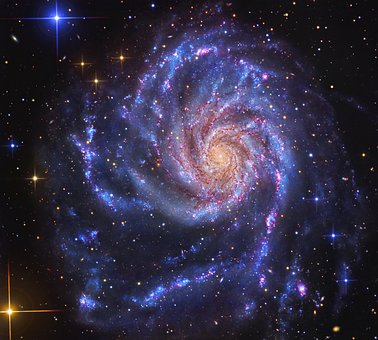
We live in a benevolent universe. The soil is benevolent. It provides conditions for a seed to germinate, to grow, to realize its potential. In fact, its benevolence is endless; it helps one single seed to multiply into millions of seeds for hundreds of years, producing colorful, aromatic, juicy and delicious fruit, feeding birds, bees, humans and animals. The tree celebrates the benevolence of the soil and becomes benevolent in return, offering its fruit to whoever is in need, without judgment: a sinner or a saint, a poet or a prisoner, a prince or a peasant. The tree gives wood to fashion a chair, a bird a branch to make her nest, and oxygen to maintain life.
The benevolence of the sun is beyond words. It burns itself to maintain life; it ripens the crops to feed all beings. It provides the perfect conditions for photosynthesis, for the whole plant kingdom to nourish itself and give nourishment in turn to bacteria, insects, birds and animals.
The moon is benevolent. It maintains the cycles of life and time. Time and tide are sustained by its presence. The moon is the patron saint of poets and painters and an embodiment of feminine principles.
Rain is benevolent. It delivers itself to every farm, field, forest, mountain and human habitat, free of charge, without needing any external supply of energy. It moistens the soil, quenches our thirst, fills the rivers, ponds, lakes and wells and in partnership with the sun, it feeds the world.
Fire is benevolent – it is in our belly; it is in our hearth, it is there to purify, to heat, to light, to cook, to digest, to decompose, and to liberate; even a forest fire is a source of regeneration.
The benevolence of fire is of a different order than the benevolence of soil and sun; nevertheless fire is benevolent, and without it there can be no life.
Air is benevolent. We breathe, therefore we are. Air is related to the spirit, to inspiration, to spirituality; air is the breath of Brahman, breath of the universe, breath of God. In Sanskrit air is prana, which means life itself. In Chinese air is chi, which means the source of energy. We are blessed when we have a breath of fresh air. Our clothes and homes are renewed when they are aired. Lack of air causes stuffiness. Air is eternal and truly benevolent.
Space is benevolent. All and everything is held in space and by space. All movements, all changes and every kind of dynamism are sustained in the stillness of space. We always need to be mindful of reducing our clutter and maintaining spaciousness in order to be detached and remain free.
Soul is benevolent. Compassion, kindness, generosity and inner luminosity are the qualities of the soul. Mind, intelligence and consciousness are held in and processed by soul. Soul is the seed of life. Feelings, emotions, sentiments, intuition and reason pass through soul and manifest in the world. But it is not only humans who have soul; animals, birds, insects and microbes have soul. Soil, trees, rocks and rivers have soul. Even a home has soul. There is a world soul, anima mundi, of which we are an integral part. A soul that is cared for brings us joy.
Society is benevolent. Each and every one of us together make up our society, the human community. Language, culture, literature, arts, architecture, agriculture, knowledge, science: all of these and much more are created by society and shared among humanity. We pay no royalty to speak in English or French, Sanskrit or Chinese. Myths and legends, plays and poetry are handed down from generation to generation. Without society there is no civilisation and no culture.
We have inherited wisdom from indigenous peoples. We have received religion from the great masters like Muhammad, Mahavira, Moses, the Buddha, Jesus Christ and Lao Tzu. What we have gained through the long history of humanity is measureless. We are indebted to society, which we cannot pay back; nor is any payment demanded of us.
Families are benevolent. We are born of love. Our parents conceived us in love. Our mother gave us the security and safety of her womb until we were ready to embrace the world. The benevolent universe puts milk in our mother’s breast so that we can be nourished. Our fathers, uncles and aunts kept their benevolent eyes on us. Our parents worked hard to provide everything we needed and gave us a sense of responsibility so that we might share our love with our own children to ensure the continuing benevolence.
The world is how you see it and what you make of it. If you look at the world with benevolent eyes, the world reciprocates with benevolence. If you project suspicion and self-interest, you get the same back. Trust begets trust, and fear begets fear. Recognizing the benevolence of the universe is not to deny the shadow side, but if we sow seeds of malevolence, malevolence will grow; if we sow seeds of benevolence, benevolence will grow.
A traveler was passing through a village and asked someone standing by: “What’s the next village like? Is it friendly?”
The person asked in return: “How was the village you have just come from?”
“Oh, it was awful; people there were unfriendly and indifferent, some even hostile,” said the traveler.
“The next village is similar,” was the reply. So the traveler walked on with an anxious frown.
After a while another traveller stopped to ask the same question: “What’s the next village like?”
The same person replied with the same question: “How did you find the previous village?”
This time the response was different. “Oh, it was good; people were friendly, helpful and hospitable,” said the traveller.
The person in the village replied: “You will find the next village similar.”
If you project benevolence, you will get benevolence in return. This is the moral of the story, and we all understand it easily when we hear such a story. But when it comes to racial, religious or national conflicts, we lose our confidence and play a different role.
In spite of the innate nature of human kindness, the world faces multiple conflicts. Palestine versus Israel, Iran versus the USA, and India versus Pakistan; some of these conflicts have been with us for more than 60 years! Let us suppose that the leaders of the USA say to the government of Iran: “We wish to be your friends; we will never do anything to harm your people. We will sell our goods to you at a fair price and buy your oil at a fair price and never use military force against you.” This would be a statement of benevolence.
Then suppose the government of Iran says, “We never wish to harm the national interest of the USA. Nor will we attack Israel. Let us sit down together and never stop negotiating until we find a fair resolution for fellow Muslims – the Palestinians. They have suffered long enough. We will use only peaceful, nonviolent means to solve our problems.” With such statements of benevolence, it would be impossible for either the USA or Iran to engage in threats, ultimatums, suspicions or boycotts.
Apartheid ended through benevolence. The Berlin Wall came down and satellite states of the Soviet Union became free through the benevolence of Mikhail Gorbachev and other enlightened Russian leaders. The European Union came into being after centuries of strife, thanks to the foresight, wisdom, courage and benevolence of the promoters of the Treaty of Rome. Colonialism ended in many countries through negotiation, not violence. Slavery ended because many slave owners started to listen to their conscience and found it morally abhorrent to own other human beings. Racial discrimination in the United States became illegal through nonviolence and the benevolent struggle of civil rights leaders like Martin Luther King. As a result, now we have a black president in the White House.
Since the history of benevolence is so successful, there is no reason not to embrace it. But some people call me naive and unrealistic. Then what have the realists got to show for their efforts? What have the realists achieved? Under the watch of so-called realists, oceans are overfished and polluted, the biosphere is being saturated with greenhouse gases, and population is exploding beyond the carrying capacity of the Earth. If this is the achievement of realists, then now is the time to say goodbye to them and give idealists a chance.
The idealists need to work together now to build a movement of benevolence. At the moment there are benevolent individuals and benevolent organizations but no movement as there was against slavery and against apartheid. The Soil Association, Friends of the Earth, Greenpeace, WWF, RSPB, CPRE, the National Trust and similar organizations are mostly working in isolation from spiritual and social justice groups. Similarly, faith groups, New Age groups, yoga and meditation centers focus narrowly on care of the soul and personal development, while organizations working for social justice such as Oxfam, the World Development Movement and Médecins Sans Frontières are only fighting their corner. The movements for environmental justice, social justice and spiritual renewal are three aspects of benevolence. If they all came together and worked together, there would be a strong movement for transformation, for change and for the creation of a new paradigm.
The leadership for benevolence will not come from the prime ministers or presidents of the world, and a culture of benevolence will not be legislated through parliaments and senates. Such leadership and such culture has to emerge from the grass roots. Therefore, individuals and organizations committed to the care of the soil, qualities of soul and concern for society need to work together to build a grass roots movement.
Such a movement has to work at two levels. The first step is to challenge and resist malevolent institutions engaged in damaging the integrity of the Earth, undermining spiritual values and perpetuating social injustice and economic exploitation. In the past, such resistance was offered by the champions of social and political liberation such as Mahatma Gandhi, Martin Luther King, Nelson Mandela and Aung San Suu Kyi.
Exposing the folly of institutionalized violence is necessary to wake people up, but the second step is to build alternatives, develop new models and create institutions that promote organic farming, animal welfare, protection of wildlife, conservation of rainforests, respect for all faiths and interfaith dialogue, the release of political prisoners, nuclear and general disarmament, the promotion of cooperatives, and encouragement of conflict resolution through peaceful means.
Public awareness about environmental sustainability and social justice has risen by leaps and bounds in the last 50 years, since the publication of Rachel Carson’s book Silent Spring. In the 1960s, concern for renewable energy in the form of solar and wind power was very much a minority interest. Animal welfare and vegetarianism was also a small movement. The idea of development was all about aid and charity, the westernization of the global south and the misguided industrialization of agrarian societies.
Now we are living in a different world. Evidence of global warming and depletion of fossil fuels has woken people up. The membership of environmental organizations is greater than the membership of political parties, so there is cause for optimism and hope. What is created by humans can be changed by humans. We need to build a movement with all the courage of our convictions.
Environmental, spiritual and social movements need to seize the opportunity and show that another world is possible, a world where Nature is respected, where compassion and cooperation are valued and where people come before profit. We can initiate and implement the great transition from a capitalist economy to an ecological economy and value natural wealth above financial wealth. This holistic vision, where natural, spiritual and social dimensions are brought together into an integrated reality, is an urgent necessity.
We may all have a part to play in the solution, but we need to know the big picture in order to build an effective movement. And that big picture has an ecological dimension, a spiritual dimension and a social dimension, encapsulated in that trinity I speak and write of: Soil, Soul, Society.
Soil, Soul, Society by Satish Kumar is published by Ivy Press, £16.99. This article is an edited extract from the book.
Satish Kumar was Editor-in-Chief at Resurgence & Ecologist The Resurgence Trust publishes Resurgence & Ecologist magazine. Registered Charity Number: 1120414
You can subscribe to the free newsletter of Ecologist-Resurgence magazine. You will find many more articles like this.
Go to www.resurgence.org

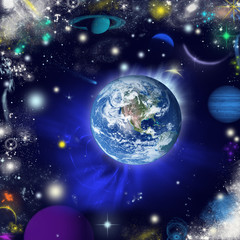
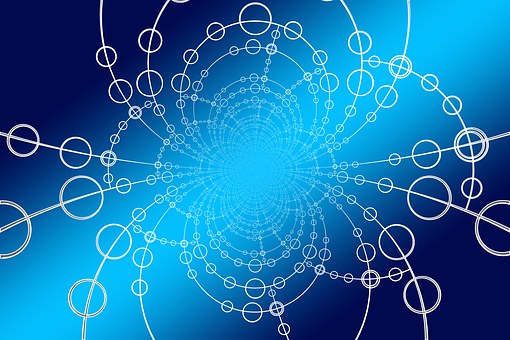
 Be praised, my Lord, for all your creation and especially for our Brother Sun, who brings us the day and the light; he is strong and shines magnificently. O Lord, we think of you when we look at him.
Be praised, my Lord, for all your creation and especially for our Brother Sun, who brings us the day and the light; he is strong and shines magnificently. O Lord, we think of you when we look at him.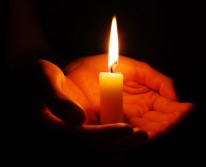 Be praised, my Lord, for Brother Fire, through whom you give us light in the darkness: he is bright and lively and strong.
Be praised, my Lord, for Brother Fire, through whom you give us light in the darkness: he is bright and lively and strong.



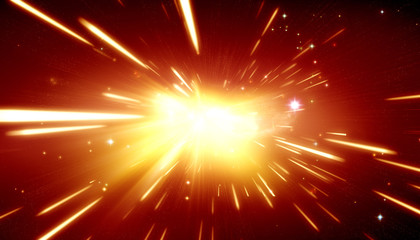
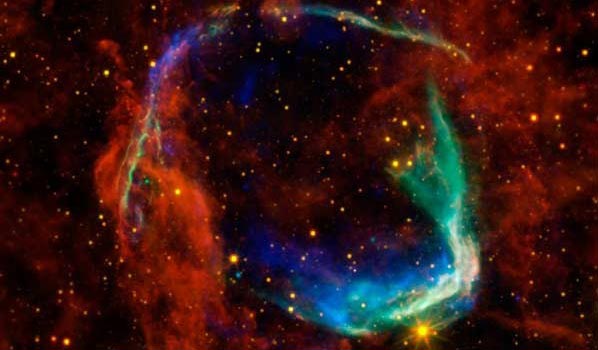
 picture Dana Lynn Anderson
picture Dana Lynn Anderson